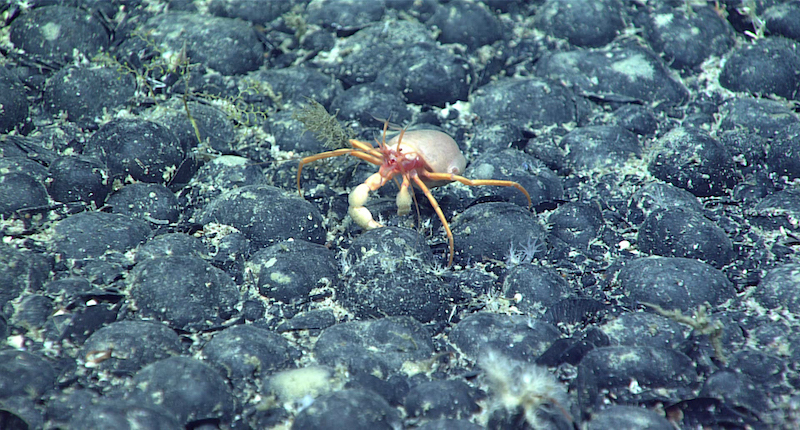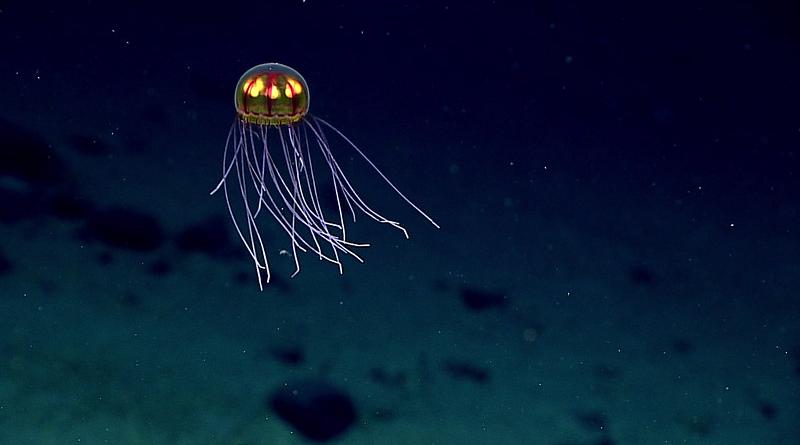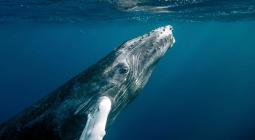Deep-sea mining will be exempted from environmental impact assessment (EIA) measures established under a landmark international oceans treaty, a move campaigners fear could undermine protection for the seabed.
The High Seas Treaty is the first international agreement to protect oceans that lie outside of national boundaries. It creates a legal mechanism for the future designation of marine protected areas and sets outs new funding provisions for marine conservation.
The deal, struck on 4 March after almost two decades of negotiations, was hailed as an “historic day for conservation” and one of the most significant ocean governance developments in the past 40 years.
However, it does not apply directly to activities already regulated by existing bodies.
Andreas Hansen, senior policy advisor at US non-profit The Nature Conservancy, told Climate Home News it was “less than ideal” that deep-sea mining in international waters, which is governed by the International Seabed Authority (ISA), is exempt from the treaty’s environmental assessment framework.
Campaigners fear this could undermine attempts to protect the seabed from human activities, for which current EIA rules are not very extensive.
ISA, a UN-affiliated body set up in 1994 under the UN Convention on the Law of the Sea (UNCLOS), is currently negotiating the approval of a mining code, laying out the rules under which companies will be allowed to extract minerals from the seabed. Campaigners say draft EIA provisions in this code are also weaker than those set out in the High Seas Treaty.
Several operators have already been exploring an area of the Pacific Ocean floor known as the Clarion Clipperton Zone. This contains a concentration of polymetallic nodules, rich in nickel, cobalt, copper and manganese, which are critical for manufacturing electric vehicles.
The ISA accelerated the pace of its mining code negotiations after the island state of Nauru triggered an obscure provision forcing approval by July 2023. The risk is that, if the agency misses the deadline, companies could submit a request to begin full-scale mining, even without any rules in place.
The ISA told Climate Home News that it is “fully committed to protecting the marine environment and regulating economic, exploratory, and scientific activity in the deep sea”.
The full environmental impacts of deep-sea activities are still being researched. But scientists have warned about the risks of mining generating sediment plumes of debris that could travel for miles and pollute the ocean.
Several countries, including Chile, Costa Rica, Germany, Spain and New Zealand, have called for a moratorium or a ‘precautionary pause’ on the practice until further research has been done.

A Parapagurus crab makes its way across a densely packed field of ferromanganese nodules in the Gosnold Seamount. Photo: NOAA Ocean Exploration
The ISA appears to have been concerned about the impact the new High Seas Treaty could have on its authority over seabed mining, according to Duncan Currie, a lawyer and advisor to the Deep Sea Conservation Coalition.
Climate Home News has seen a copy of an information note by the ISA, circulated among the delegates at the final round of treaty talks in New York, which detailed the relevance of the body’s role in the context of the new agreement.
The document sets out how the ISA purportedly fulfills its mandate of protecting biodiversity and warned against undermining existing provisions “in the haste to seek to manage particular components of the marine environment”.
The ISA also said in the note it had developed a “comprehensive” EIA regime for activities taking place in its jurisdiction. The authority’s EIAs have been previously criticised by campaigners for prioritising the development of deep-sea mining over environmental protection.
The ISA told Climate Home News that discussions on how to further update the EIA framework are continuing and “any future changes to the EIA framework will reflect the will of ISA member states”.
In a public statement, the authority welcomed the conclusion of the new agreement and said it “stands ready to work with all relevant stakeholders to implement the ambitious goals”. It added that “coordination, cooperation and complementarity are pivotal for the sustainable use of the ocean resources”.
‘Get out of jail free’
Currie said the ISA secretariat “tried very hard to ringfence the 1994 UNCLOS agreement”.
And even though most of its lobbying efforts ultimately “failed”, he described the exemption from the treaty’s framework as a “get out of jail free card” for the ISA.
The ISA said suggestions it tried to influence decision-making are “not correct”. But Currie said parties negotiating the mining code should pay close regard to the new treaty’s EIA provisions and push for them to be adopted as the code’s gold standard.
Hansen too hoped that the agreement would apply “indirect pressure” for stronger protection.
Campaigners are optimistic that the new treaty will stitch together the fragmented patchwork of ocean governance organisations – of which the ISA is just one – bringing more coordination and oversight.
“The new authority needs to be the umbrella organisation for existing bodies,” said Minna Epps, ocean director at IUCN, an environmental network for governments and civil society. “You cannot have the International Seabed Authority just presiding over the seabed floor and those activities that will inevitably affect the water column and all the other components of the high seas.”
Long road ahead
The approval of the High Seas Treaty’s final wording was seen by delegates and campaigners as a “crucial milestone”, but there is still a long road ahead. The agreement first needs to be formally adopted and then ratified by enough individual countries to be legally enforceable. Only then will a conference of the parties be convened to turn the legal framework into an actionable plan.
In the meantime, many questions remain unanswered. “It is too early to say what happens to deep-sea mining in a marine protected area,” said Currie. “The agreement is significant because it recognises the importance of marine biodiversity in relation not only to the high seas, but to the area [governed by the ISA]. Its application in concrete will need to be developed in the future.”
The article has been updated 09/03/2023 to include comments from the ISA. A reference to an ISA note being circulated to “some” delegates was changed to reflect the ISA statement.






